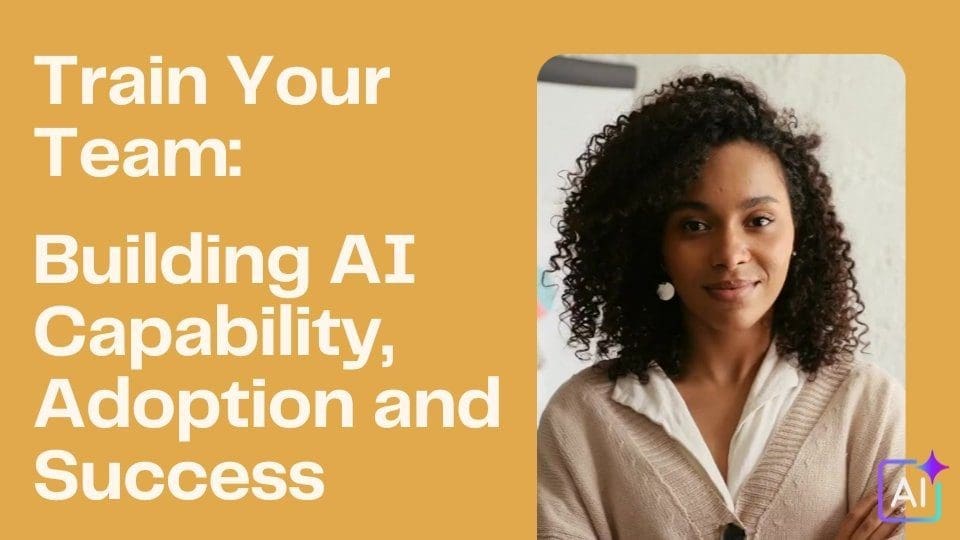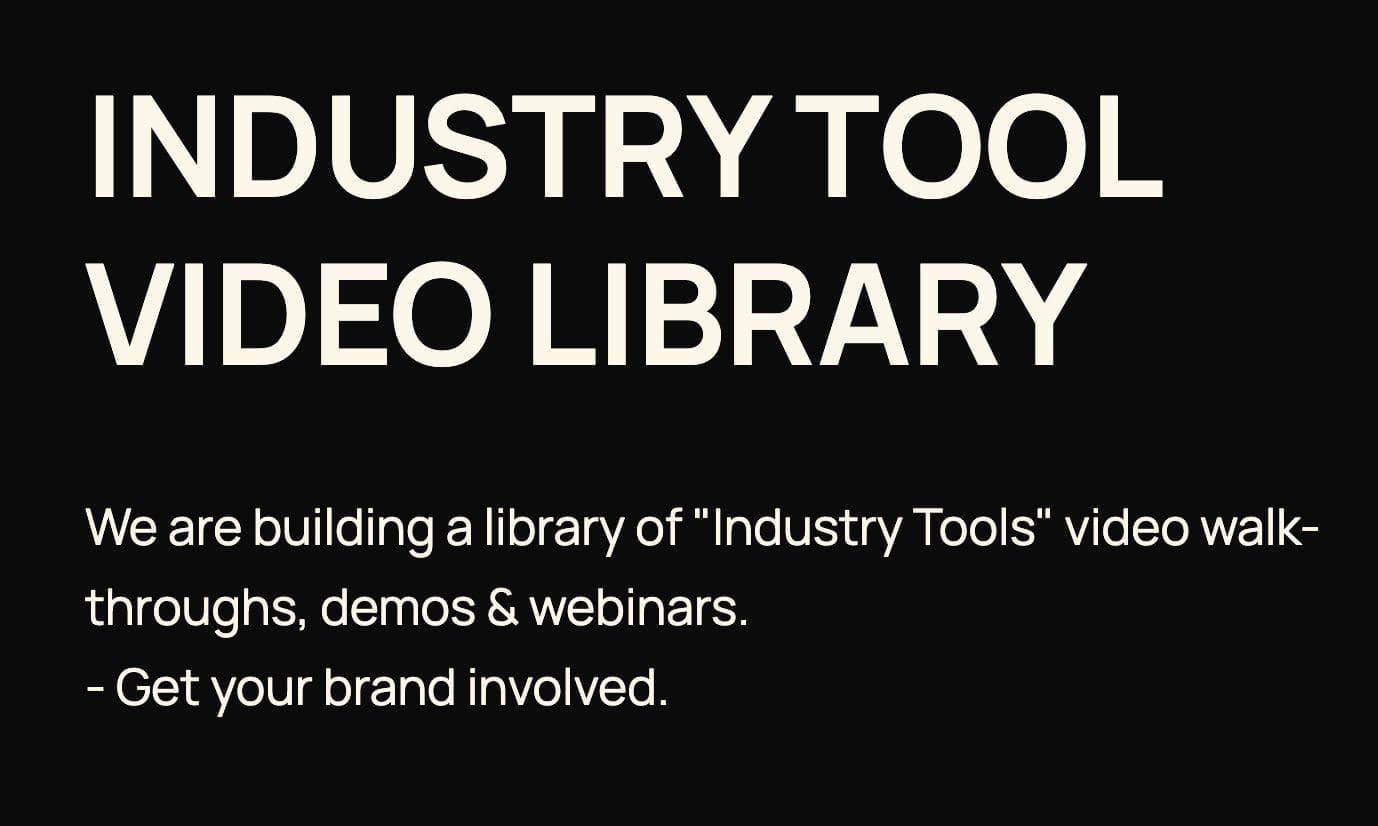AI Learning Centres:
- AI – Learn The Basics
- Get The Most From ChatGPT
- Branding in The Age of AI
- AI for Client Experience
- AI For Prospecting
- AI For Marketing
- AI For Listings & Ads
- Team Adoption of AI
- AI For PM
- AIO & Generative Search
- AI For Operations & Efficiency
- AI For Market Research & Analysis
- AI Ethics, Privacy & Compliance in Real Estate
Digital Marketing & Social Media Learning Centres:
Guides & Downloads

Train Your Team: Building AI Capability, Adoption and Success
AI promises faster lead generation, smoother admin, and happier clients. Yet these gains only appear when every staff member—sales agents, property managers, administrators, even reception—knows how and why to use the new tech. A smart, well-planned training program turns AI from a shiny gadget into a daily habit that lifts your whole agency.
Map Out Your Training Vision
Think of AI training like planning a marketing campaign. You start with clear goals, pick the right message for each audience, and measure the results.
Set the big picture – What does “good” look like? Examples: 100 per cent CRM data entered by voice AI, or a 50 per cent cut in time spent writing listing copy.
Choose milestones – Break the journey into small wins, such as “everyone completes the foundation module by the end of the month.”
Match learning to roles – Salespeople need scripts, listing tools, and prospecting chatbots; admins need data-entry automations; marketing staff need AI design assistants.
Step 1 – Assess Skills and Set Goals
Before you teach, you test. A short survey or group chat uncovers:
Current comfort levels with tech (“I love apps” → advanced; “I still fax contracts” → beginner).
Daily tasks that cause pain—slow email replies, manual social media posts, messy databases.
Personal interests—some staff enjoy video; others prefer written guides.
Outcome: a clear map of who needs what, and an agreed-upon target (for example, “reduce days-on-market by 10 per cent by using AI-powered pricing tools”).
Step 2 – Build a Layered Learning Programme
A single lunch-and-learn is never enough. Mix learning styles so everyone finds a format that sticks.
Hands-On Workshops
Live demos in the office boardroom.
Staff use their own listings and leads for practice, so lessons feel real.
Coaches walk around to give one-to-one help.
Self-Paced Online Modules
Short, five-minute videos—perfect for a quick hit between appointments.
Interactive quizzes keep attention and lock in knowledge.
Accessible 24 / 7 for remote or part-time staff.
Written Guides and Cheat Sheets
One-page “How to write a property blurb with AI” PDFs.
Flow-charts showing step-by-step processes.
Printed copies on desks for easy reference.
Micro-Learning Drip
Weekly two-minute tip posted in Slack or emailed.
Focus on a single feature, e.g. “Voice-to-CRM notes.”
Reinforces practice without information overload.
Step 3 – Turn Your AI Partners into Teachers
Most software firms offer free or low-cost education—use it.
Onboarding sessions – Ask vendors to run agency-only webinars. Real examples in your price range make learning stick.
Help-desks and chat support – Encourage staff to log tickets instead of guessing. Quick answers stop bad habits.
Certification badges – Some platforms issue mini-qualifications. Add these to staff LinkedIn profiles to build credibility with clients.
Step 4 – Grow a Culture of Curiosity
Tools evolve quickly. If your team stops learning, yesterday’s best practice becomes tomorrow’s bottleneck.
Appoint AI Champions – Select one or two keen early adopters from each department. They test new features, share wins, and translate jargon.
Weekly “show-and-tell” – Over Friday coffee, a team member shares a five-minute AI shortcut they discovered.
Fail-friendly zone – Give permission to try and flub. Mistakes teach faster than manuals.
Tip: Place a whiteboard in the office kitchen titled “AI Hacks We Discovered This Week”. Watch it fill.
Step 5 – Tackle Fears and Roadblocks
Change can feel scary—especially when headlines scream “Robots taking jobs”.
Open conversations
Hold a Q&A forum. Let staff voice worries: data privacy, job security, complexity.
Answer with facts: “The bot writes first-draft ads; you add the human touch.”
Share success stories
“Since using the lead-scoring AI, Jess booked two extra listing appointments last week.”
Real numbers beat rumours.
Reframe value
AI removes busywork, freeing agents for high-value tasks—negotiations, relationship building, community events.
Step 6 – Support, Celebrate, and Coach
Build Ongoing Support
Buddy system – Pair tech-savvy agents with slower adopters.
Office hours – The operations manager keeps a weekly slot for one-on-one help.
Resource hub – Store guides, videos, and FAQs in a single cloud folder.
Recognise Wins
Shout-outs during team meetings: “Maria used the chat tool to reply to 20 buyer enquiries in half the time.”
Small rewards—coffee vouchers, movie tickets—for milestone achievements.
Display leader-boards (usage rates, new AI-driven leads) on the TV in reception. Healthy competition boosts momentum.
Step 7 – Measure, Review, and Improve
| Metric | What to Track | Why It Matters |
|---|---|---|
| Training Completion | % of staff finishing modules | Shows reach of programme |
| Feature Usage | Log-ins, tasks automated | Reveals adoption gaps |
| Time Saved | Hours per week freed | Translates learning into dollars |
| Lead Quality | Conversion rate uplift | Proof that AI drives revenue |
| Staff Confidence | Quick pulse surveys | Detects where extra coaching needed |
Run quarterly reviews – Compare baseline numbers with current results.
Iterate – If uptake stalls, adjust content: shorter videos, fresh examples, different timing.
Quick-Start Checklist
Survey skills and pain points
Set clear, role-based goals
Schedule blended learning: live, online, written
Rope in vendors for expert sessions
Nominate AI Champions
Hold weekly micro-learning moments
Celebrate early wins loudly
Track metrics and refine
Print this list, pin it to the office noticeboard, and tick as you go.
Real-World Scenario: Sunshine Coast Realty
Background: Mid-sized agency with 18 staff, mixed ages and tech abilities.
Challenge
Manual listing descriptions took hours; lead response times lagged.
Training Actions
Ran a two-day boot camp—morning demos, afternoon “build your own” sessions.
Partnered with the AI copywriting vendor for a custom webinar focused on holiday-letting language.
Appointed two AI Champions (one sales, one admin) to run weekly drop-ins.
Introduced a “Friday Five” email—five quick wins tested by staff that week.
Outcomes After 90 Days
Listing copywriting time fell from 45 minutes to 12.
Average speed-to-lead reply improved from 3 hours to 20 minutes.
Three junior agents booked their first solo listings—confidence boosted by AI-generated prospecting scripts.
Agency owner reports a “buzz” in the office: teammates swapping tips, not complaints.
Frequently Asked Questions
Q: How long should our initial training programme run?
A: Aim for a 4-6 week sprint. That’s enough time for each staff member to learn, practise, and see their first success—vital for building trust.
Q: Do we need to hire an external trainer?
A: Not always. Many agencies start with internal champions plus vendor resources. If budget allows, a specialist can speed things up and add accountability.
Q: What if a staff member refuses to engage?
A: Pair them with a patient buddy, set very small tasks (e.g., “use the voice note tool for one call”), and highlight results that make their own day easier.
Q: How do we keep training fresh once the basics are done?
A: Rotate ownership—each month a different team presents a micro-lesson. Variety keeps interest high and spreads responsibility.
Troubleshooting Common Hurdles
| Roadblock | Simple Fix |
|---|---|
| “Too busy to learn.” | Slot 15-minute micro-sessions just before the weekly sales meeting. |
| Forgetting steps. | Place laminated cheat-sheets beside each workstation. |
| Fear of looking silly. | Encourage group practice—everyone makes typos together and laughs. |
| Data privacy worries. | Hold a short session on the Australian Privacy Act and show how the tool encrypts data. |
| Tool fatigue (too many apps). | Integrate AI into existing platforms like your CRM, so staff use one login. |
Linking Training to Business Results
Training is an investment. Tie outcomes to numbers the whole team understands.
Lead Conversion – Track enquiry-to-appointment rate.
Days on Market – Faster, data-backed pricing can shorten campaigns.
Vendor Satisfaction – Quick AI-powered updates keep owners informed and calm. Use surveys for proof.
Revenue per Agent – Time saved on admin frees hours for prospecting.
Share these wins in monthly reports and at the next office lunch. Success stories motivate and justify ongoing training budgets.
AI tools alone will not transform your agency. People who know how to wield them will. By mapping clear goals, blending learning styles, supporting staff fears, and measuring the impact, you create a self-sustaining culture where curiosity thrives and results compound.
When every Australian real estate agent in your office can say, “I used AI today to make my client’s life easier,” you’ll know training has done its job. Keep nurturing that habit, and your agency will lead the market—one well-trained, AI-enabled team member at a time.
Author – Ken Hobson






